高级码农设计的程序能解耦,是多么重要的一件事情!
作者:小傅哥
沉淀、分享、成长,让自己和他人都能有所收获!😄
一、前言
能解耦,是多么重要的一件事情!
摔杯为号、看我眼色行事、见南面火起,这是在嘎哈么?这其实是在通过事物传播进行解耦引线和炸弹,仅仅是这样的一个解耦,它放到了多少村夫莽汉,劫了法场,篡了兵权!
这样的解耦场景在互联网开发的设计中使用的也是非常频繁,如:这里需要一个注册完成事件推送消息、用户下单我会发送一个MQ、收到我的支付消息就可以发货了等等,都是依靠事件订阅和发布以及 MQ 消息这样的组件,来处理系统之间的调用解耦,最终通过解耦的方式来提升整体系统架构的负载能力。
其实解耦思路可以理解为设计模式中观察者模式的具体使用效果,在观察者模式中当对象间存在一对多关系时,则使用观察者模式,它是一种定义对象间的一种一对多的依赖关系,当一个对象的状态发生改变时,所有依赖于它的对象都得到通知并被自动更新。这让我想起了我每个月的车牌摇号,都会推送给我一条本月没中签的消息!!!
二、目标
在 Spring 中有一个 Event 事件功能,它可以提供事件的定义、发布以及监听事件来完成一些自定义的动作。比如你可以定义一个新用户注册的事件,当有用户执行注册完成后,在事件监听中给用户发送一些优惠券和短信提醒,这样的操作就可以把属于基本功能的注册和对应的策略服务分开,降低系统的耦合。以后在扩展注册服务,比如需要添加风控策略、添加实名认证、判断用户属性等都不会影响到依赖注册成功后执行的动作。
那么在本章节我们需要以观察者模式的方式,设计和实现 Spring Event 的容器事件和事件监听器功能,最终可以让我们在现又实现的 Spring 框架中可以定义、监听和发布自己的事件信息。
三、方案
其实事件的设计本身就是一种观察者模式的实现,它所要解决的就是一个对象状态改变给其他对象通知的问题,而且要考虑到易用和低耦合,保证高度的协作。
在功能实现上我们需要定义出事件类、事件监听、事件发布,而这些类的功能需要结合到 Spring 的 AbstractApplicationContext#refresh(),以便于处理事件初始化和注册事件监听器的操作。整体设计结构如下图:
-
以上整个类关系图以围绕实现 event 事件定义、发布、监听功能实现和把事件的相关内容使用 AbstractApplicationContext#refresh 进行注册和处理操作。
-
在实现的过程中主要以扩展 spring context 包为主,事件的实现也是在这个包下进行扩展的,当然也可以看出来目前所有的实现内容,仍然是以 IOC 为主。
-
ApplicationContext 容器继承事件发布功能接口 ApplicationEventPublisher,并在实现类中提供事件监听功能。
-
ApplicationEventMulticaster 接口是注册监听器和发布事件的广播器,提供添加、移除和发布事件方法。
-
最后是发布容器关闭事件,这个仍然需要扩展到 AbstractApplicationContext#close 方法中,由注册到虚拟机的钩子实现。
2. 定义和实现事件
cn.bugstack.springframework.context.ApplicationEvent
public abstract class ApplicationEvent extends EventObject {
/**
* Constructs a prototypical Event.
*
* @param source The object on which the Event initially occurred.
* @throws IllegalArgumentException if source is null.
*/
public ApplicationEvent(Object source) {
super(source);
}
}
-
以继承 java.util.EventObject 定义出具备事件功能的抽象类 ApplicationEvent,后续所有事件的类都需要继承这个类。
cn.bugstack.springframework.context.event.ApplicationContextEvent
public class ApplicationContextEvent extends ApplicationEvent {
/**
* Constructs a prototypical Event.
*
* @param source The object on which the Event initially occurred.
* @throws IllegalArgumentException if source is null.
*/
public ApplicationContextEvent(Object source) {
super(source);
}
/**
* Get the <code>ApplicationContext</code> that the event was raised for.
*/
public final ApplicationContext getApplicationContext() {
return (ApplicationContext) getSource();
}
}
cn.bugstack.springframework.context.event.ContextClosedEvent
public class ContextClosedEvent extends ApplicationContextEvent{
/**
* Constructs a prototypical Event.
*
* @param source The object on which the Event initially occurred.
* @throws IllegalArgumentException if source is null.
*/
public ContextClosedEvent(Object source) {
super(source);
}
}
cn.bugstack.springframework.context.event.ContextRefreshedEvent
public class ContextRefreshedEvent extends ApplicationContextEvent{
/**
* Constructs a prototypical Event.
*
* @param source The object on which the Event initially occurred.
* @throws IllegalArgumentException if source is null.
*/
public ContextRefreshedEvent(Object source) {
super(source);
}
}
-
ApplicationContextEvent 是定义事件的抽象类,所有的事件包括关闭、刷新,以及用户自己实现的事件,都需要继承这个类。
-
ContextClosedEvent、ContextRefreshedEvent,分别是 Spring 框架自己实现的两个事件类,可以用于监听刷新和关闭动作。
3. 事件广播器
cn.bugstack.springframework.context.event.ApplicationEventMulticaster
public interface ApplicationEventMulticaster {
/**
* Add a listener to be notified of all events.
* @param listener the listener to add
*/
void addApplicationListener(ApplicationListener<?> listener);
/**
* Remove a listener from the notification list.
* @param listener the listener to remove
*/
void removeApplicationListener(ApplicationListener<?> listener);
/**
* Multicast the given application event to appropriate listeners.
* @param event the event to multicast
*/
void multicastEvent(ApplicationEvent event);
}
-
在事件广播器中定义了添加监听和删除监听的方法以及一个广播事件的方法
multicastEvent最终推送时间消息也会经过这个接口方法来处理谁该接收事件。
cn.bugstack.springframework.context.event.AbstractApplicationEventMulticaster
public abstract class AbstractApplicationEventMulticaster implements ApplicationEventMulticaster, BeanFactoryAware {
public final Set<ApplicationListener<ApplicationEvent>> applicationListeners = new LinkedHashSet<>();
private BeanFactory beanFactory;
@Override
public void addApplicationListener(ApplicationListener<?> listener) {
applicationListeners.add((ApplicationListener<ApplicationEvent>) listener);
}
@Override
public void removeApplicationListener(ApplicationListener<?> listener) {
applicationListeners.remove(listener);
}
@Override
public final void setBeanFactory(BeanFactory beanFactory) {
this.beanFactory = beanFactory;
}
protected Collection<ApplicationListener> getApplicationListeners(ApplicationEvent event) {
LinkedList<ApplicationListener> allListeners = new LinkedList<ApplicationListener>();
for (ApplicationListener<ApplicationEvent> listener : applicationListeners) {
if (supportsEvent(listener, event)) allListeners.add(listener);
}
return allListeners;
}
/**
* 监听器是否对该事件感兴趣
*/
protected boolean supportsEvent(ApplicationListener<ApplicationEvent> applicationListener, ApplicationEvent event) {
Class<? extends ApplicationListener> listenerClass = applicationListener.getClass();
// 按照 CglibSubclassingInstantiationStrategy、SimpleInstantiationStrategy 不同的实例化类型,需要判断后获取目标 class
Class<?> targetClass = ClassUtils.isCglibProxyClass(listenerClass) ? listenerClass.getSuperclass() : listenerClass;
Type genericInterface = targetClass.getGenericInterfaces()[0];
Type actualTypeArgument = ((ParameterizedType) genericInterface).getActualTypeArguments()[0];
String className = actualTypeArgument.getTypeName();
Class<?> eventClassName;
try {
eventClassName = Class.forName(className);
} catch (ClassNotFoundException e) {
throw new BeansException("wrong event class name: " + className);
}
// 判定此 eventClassName 对象所表示的类或接口与指定的 event.getClass() 参数所表示的类或接口是否相同,或是否是其超类或超接口。
// isAssignableFrom是用来判断子类和父类的关系的,或者接口的实现类和接口的关系的,默认所有的类的终极父类都是Object。如果A.isAssignableFrom(B)结果是true,证明B可以转换成为A,也就是A可以由B转换而来。
return eventClassName.isAssignableFrom(event.getClass());
}
}
-
AbstractApplicationEventMulticaster 是对事件广播器的公用方法提取,在这个类中可以实现一些基本功能,避免所有直接实现接口放还需要处理细节。
-
除了像 addApplicationListener、removeApplicationListener,这样的通用方法,这里这个类中主要是对 getApplicationListeners 和 supportsEvent 的处理。
-
getApplicationListeners 方法主要是摘取符合广播事件中的监听处理器,具体过滤动作在 supportsEvent 方法中。
-
在 supportsEvent 方法中,主要包括对 Cglib、Simple 不同实例化需要获取目标 Class,Cglib 代理类需要获取父类的 Class,普通实例化的不需要。接下来就是通过提取接口和对应的 ParameterizedType 和 eventClassName,方便最后确认是否为子类和父类的关系,以此证明此事件归这个符合的类处理。可以参考代码中的注释
supportsEvent 方法运行截图
-
在代码调试中可以看到,最终 eventClassName 和 event.getClass() 在 isAssignableFrom 判断下为 true
-
关于 CglibSubclassingInstantiationStrategy、SimpleInstantiationStrategy 可以尝试在 AbstractApplicationContext 类中更换验证。
4. 事件发布者的定义和实现
cn.bugstack.springframework.context.ApplicationEventPublisher
public interface ApplicationEventPublisher {
/**
* Notify all listeners registered with this application of an application
* event. Events may be framework events (such as RequestHandledEvent)
* or application-specific events.
* @param event the event to publish
*/
void publishEvent(ApplicationEvent event);
}
-
ApplicationEventPublisher 是整个一个事件的发布接口,所有的事件都需要从这个接口发布出去。
cn.bugstack.springframework.context.support.AbstractApplicationContext
public abstract class AbstractApplicationContext extends DefaultResourceLoader implements ConfigurableApplicationContext {
public static final String APPLICATION_EVENT_MULTICASTER_BEAN_NAME = "applicationEventMulticaster";
private ApplicationEventMulticaster applicationEventMulticaster;
@Override
public void refresh() throws BeansException {
// 6. 初始化事件发布者
initApplicationEventMulticaster();
// 7. 注册事件监听器
registerListeners();
// 9. 发布容器刷新完成事件
finishRefresh();
}
private void initApplicationEventMulticaster() {
ConfigurableListableBeanFactory beanFactory = getBeanFactory();
applicationEventMulticaster = new SimpleApplicationEventMulticaster(beanFactory);
beanFactory.registerSingleton(APPLICATION_EVENT_MULTICASTER_BEAN_NAME, applicationEventMulticaster);
}
private void registerListeners() {
Collection<ApplicationListener> applicationListeners = getBeansOfType(ApplicationListener.class).values();
for (ApplicationListener listener : applicationListeners) {
applicationEventMulticaster.addApplicationListener(listener);
}
}
private void finishRefresh() {
publishEvent(new ContextRefreshedEvent(this));
}
@Override
public void publishEvent(ApplicationEvent event) {
applicationEventMulticaster.multicastEvent(event);
}
@Override
public void close() {
// 发布容器关闭事件
publishEvent(new ContextClosedEvent(this));
// 执行销毁单例bean的销毁方法
getBeanFactory().destroySingletons();
}
}
-
在抽象应用上下文 AbstractApplicationContext#refresh 中,主要新增了
初始化事件发布者、注册事件监听器、发布容器刷新完成事件,三个方法用于处理事件操作。 -
初始化事件发布者(initApplicationEventMulticaster),主要用于实例化一个 SimpleApplicationEventMulticaster,这是一个事件广播器。
-
注册事件监听器(registerListeners),通过 getBeansOfType 方法获取到所有从 spring.xml 中加载到的事件配置 Bean 对象。
-
发布容器刷新完成事件(finishRefresh),发布了第一个服务器启动完成后的事件,这个事件通过 publishEvent 发布出去,其实也就是调用了 applicationEventMulticaster.multicastEvent(event); 方法。
-
最后是一个 close 方法中,新增加了发布一个容器关闭事件。
publishEvent(new ContextClosedEvent(this));
五、测试
1. 创建一个事件和监听器
cn.bugstack.springframework.test.event.CustomEvent
public class CustomEvent extends ApplicationContextEvent {
private Long id;
private String message;
/**
* Constructs a prototypical Event.
*
* @param source The object on which the Event initially occurred.
* @throws IllegalArgumentException if source is null.
*/
public CustomEvent(Object source, Long id, String message) {
super(source);
this.id = id;
this.message = message;
}
// ...get/set
}
-
创建一个自定义事件,在事件类的构造函数中可以添加自己的想要的入参信息。这个事件类最终会被完成的拿到监听里,所以你添加的属性都会被获得到。
cn.bugstack.springframework.test.event.CustomEventListener
public class CustomEventListener implements ApplicationListener<CustomEvent> {
@Override
public void onApplicationEvent(CustomEvent event) {
System.out.println("收到:" + event.getSource() + "消息;时间:" + new Date());
System.out.println("消息:" + event.getId() + ":" + event.getMessage());
}
}
-
这个是一个用于监听 CustomEvent 事件的监听器,这里你可以处理自己想要的操作,比如一些用户注册后发送优惠券和短信通知等。
-
另外是关于
ContextRefreshedEventListener implements ApplicationListener<ContextRefreshedEvent>、ContextClosedEventListener implements ApplicationListener<ContextClosedEvent>监听器,这里就不演示了,可以参考下源码。
2. 配置文件
<?xml version="1.0" encoding="UTF-8"?>
<beans>
<bean class="cn.bugstack.springframework.test.event.ContextRefreshedEventListener"/>
<bean class="cn.bugstack.springframework.test.event.CustomEventListener"/>
<bean class="cn.bugstack.springframework.test.event.ContextClosedEventListener"/>
</beans>
-
在 spring.xml 中配置了三个事件监听器,监听刷新、监控自定义事件、监听关闭事件。
3. 单元测试
public class ApiTest {
@Test
public void test_event() {
ClassPathXmlApplicationContext applicationContext = new ClassPathXmlApplicationContext("classpath:spring.xml");
applicationContext.publishEvent(new CustomEvent(applicationContext, 1019129009086763L, "成功了!"));
applicationContext.registerShutdownHook();
}
}
-
通过使用 applicationContext 新增加的发布事件接口方法,发布一个自定义事件 CustomEvent,并透传了相应的参数信息。
测试结果
刷新事件:cn.bugstack.springframework.test.event.ContextRefreshedEventListener$$EnhancerByCGLIB$$440a36f5 收到:cn.bugstack.springframework.context.support.ClassPathXmlApplicationContext@71c7db30消息;时间:22:32:50 消息:1019129009086763:成功了! 关闭事件:cn.bugstack.springframework.test.event.ContextClosedEventListener$$EnhancerByCGLIB$$f4d4b18d Process finished with exit code 0
-
从测试结果可以看到,我们自己定义的事件和监听,以及监听系统的事件信息,都可以在控制台完整的输出出来了。你也可以尝试增加一些其他事件行为,并调试代码学习观察者模式。
六、总结
-
在整个手写 Spring 框架的学习过程中,可以逐步看到很多设计模式的使用,比如:简单工厂 BeanFactory、工厂方法 FactoryBean、策略模式访问资源,现在有实现了一个观察者模式的具体使用。所以学习 Spring 的过程中,要更加注意关于设计模式的运用,这是你能读懂代码的核心也是学习的重点。
-
那么本章节关于观察者模式的实现过程,主要包括了事件的定义、事件的监听和发布事件,发布完成后根据匹配策略,监听器就会收到属于自己的事件内容,并做相应的处理动作,这样的观察者模式其实日常我们也经常使用,不过在结合 Spring 以后,除了设计模式的学习,还可以学到如何把相应观察者的实现和应用上下文结合。
-
所有在 Spring 学习到的技术、设计、思路都是可以和实际的业务开发结合起来的,而这些看似比较多的代码模块,其实也是按照各自职责一点点的扩充进去的。在自己的学习过程中,可以先动手尝试完成这些框架功能,在一点点通过调试的方式与 Spring 源码进行对照参考,最终也就慢慢掌握这些设计和编码能力了。
七、系列推荐
本文文字及图片出自 InfoQ

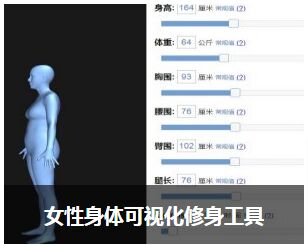
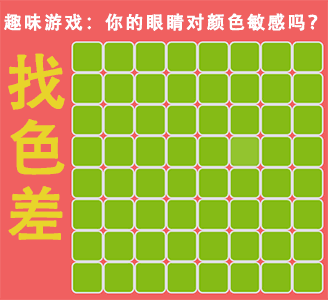
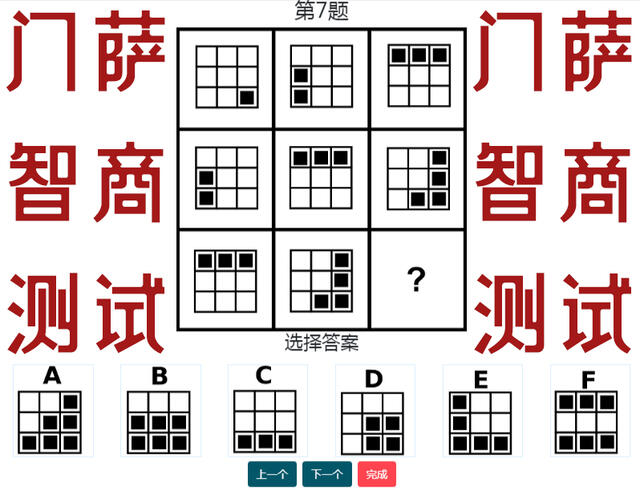
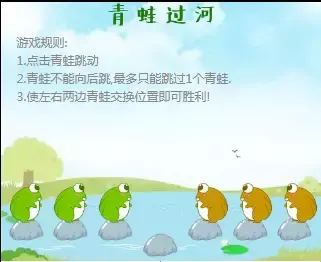
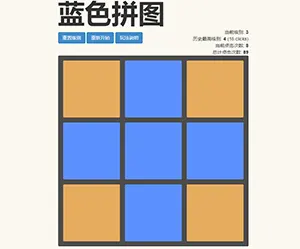



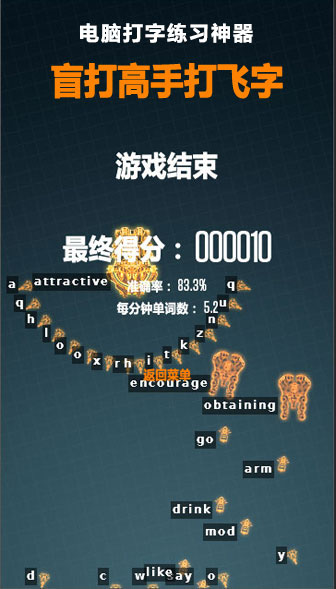









共有 1 条讨论